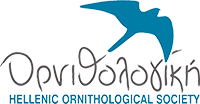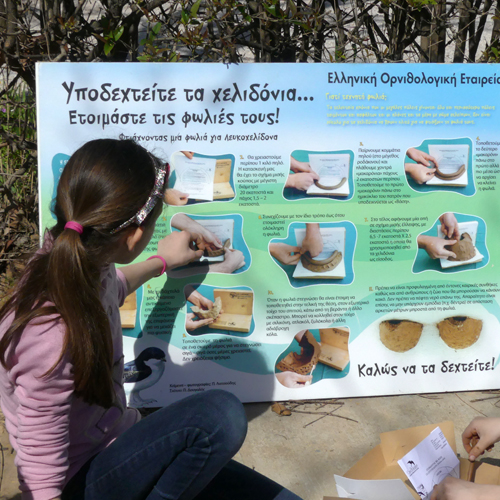The LIFE Bonelli eastMed Project “Conservation & Management of the Bonelli's eagle population in east Mediterranean” (LIFE17 NAT/GR/000514) will address the most critical threats to Bonelli’s eagle populations in Greece and Cyprus, through the implementation of targeted conservation actions in 22 Natura 2000 sites and the establishment of an effective international network for the conservation of Bonelli’s eagle in the project’s countries and in the wider Eastern Mediterranean region.
The Project actively supports the relevant environmental authorities and key stakeholders in the implementation of emergency conservation actions, in line with the specifications of the International Action Plan for the species and the published conservation guidelines, based on the long-term experience of Western Europe, in order to build an effective international conservation network in both countries of the Project and the wider Eastern Mediterranean region.
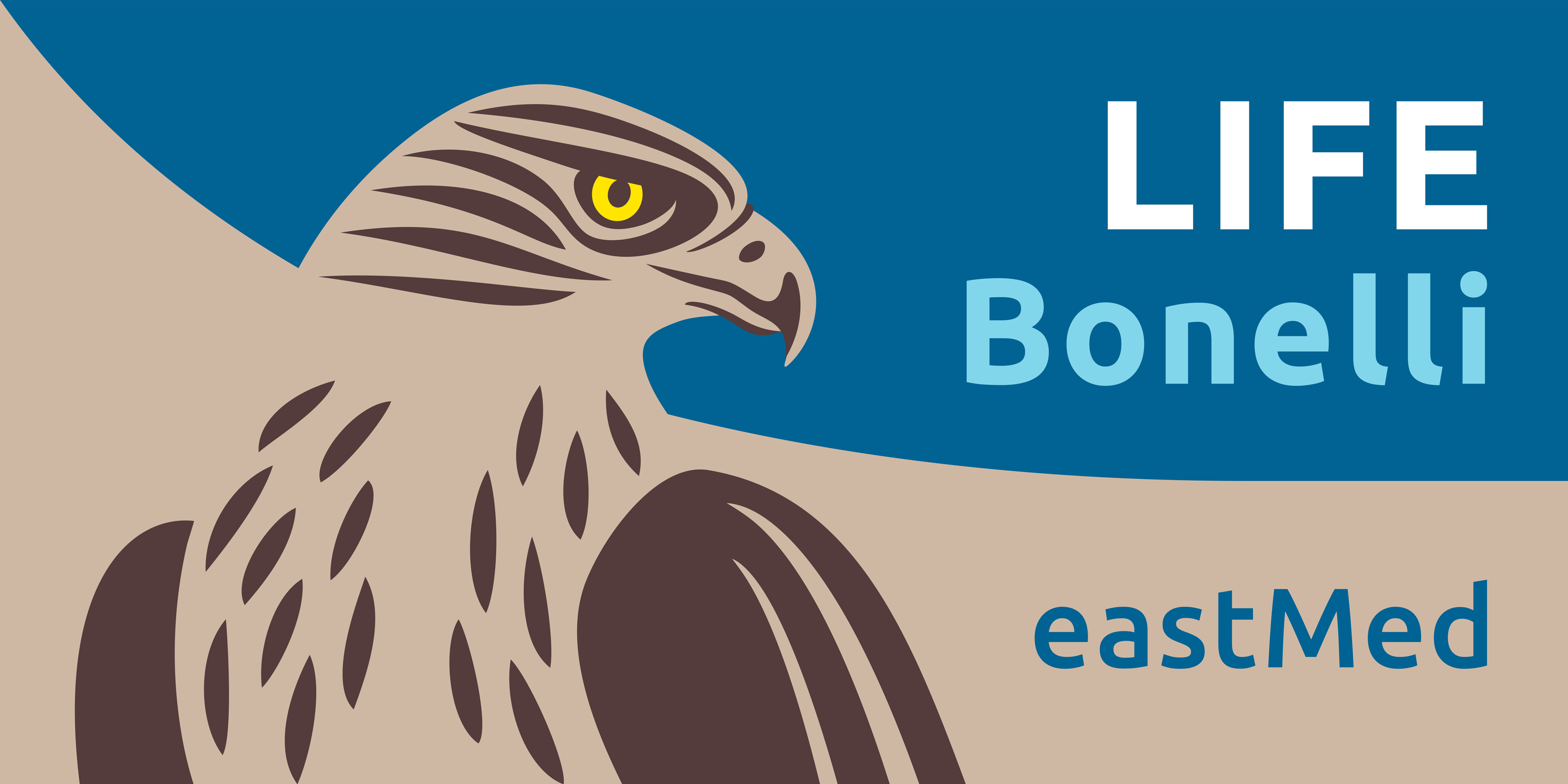
Project's actions
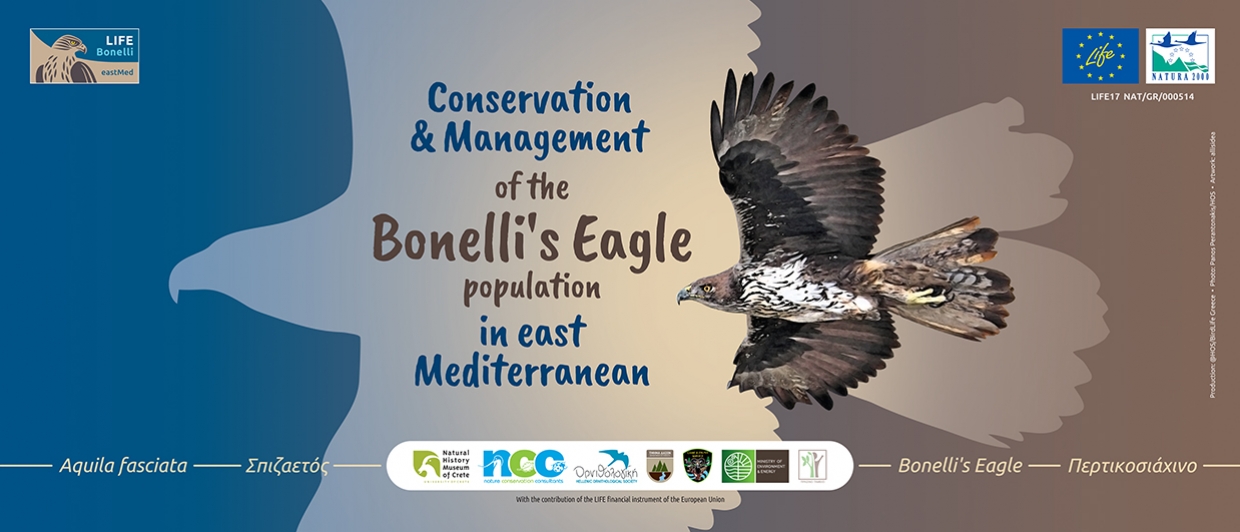
Preparatory actions include seminars in order to ensure project partnership members’ upskilling, in a) species monitoring methodology b) implementation of management and conservation actions and c) involvement of stakeholders. They also foresee the preparation of the relevant Operational Plans that will be used in a) species monitoring in the breeding and dispersal areas, b) monitoring of threats for the species, as well as the production of a Replicability and Transferability Plan.
a) Collection of data on demographic parameters (population census, age-structure, survival rate) in the countries of the east Mediterranean while in parallel aspects of the species ecology and antagonistic relationships with other raptor species such as Golden Eagle are going to be surveyed.
b) Collection of data regarding spatial use patterns of both adult and immature individuals in the region, identification of suitable breeding areas and monitoring of the dispersal movements of juvenile Bonelli’s Eagles in order to achieve this an extended us of telemetry activities is going to take place A total of more than 100 individuals is expected to be monitored through telemetry by the end of the project.
c) Collection of somatometric measurements as well as blood samples in order to investigate the species’ connectivity between eastern Mediterranean countries. In addition the diet of the species is going to be surveyed in order to identify the details of its feeding ecology.
d) Collection of data on the disturbance that occurs within breeding areas.
e) Estimation of the food availability in both breeding and dispersal areas and toxicological analysis of samples taken by prey-species in order to investigate the occurrence of residues.
f) Sensitivity mapping in order to identify sensitive areas for the Bonelli’s Eagle in Greece and Cyprus and which will allow fine-tuning of the implementation of Actions C, through determination of appropriate buffering distances to apply to the distributional data for the Bonelli’s eagle and other priority bird species.
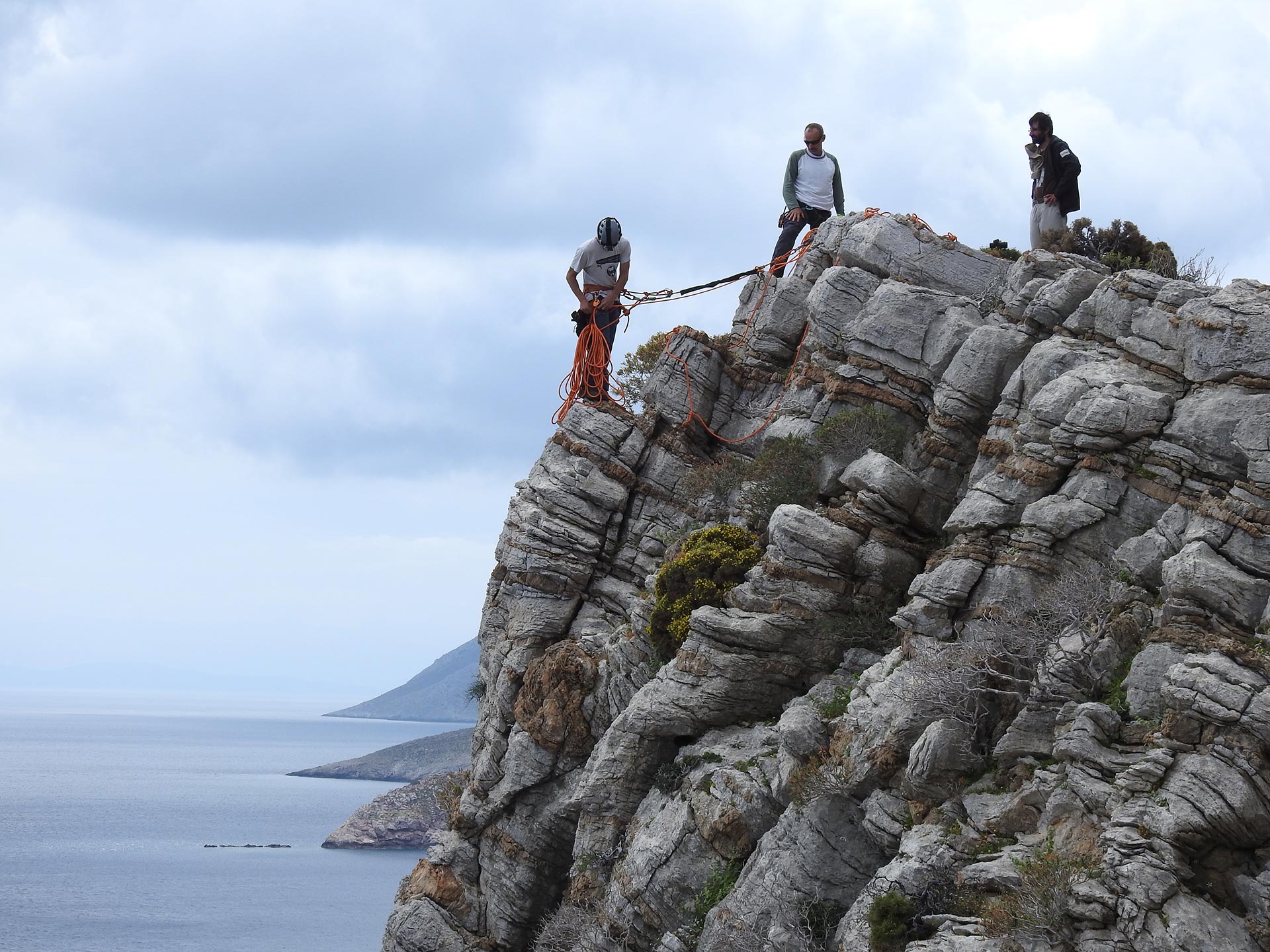

The main conservation actions of the Project include:
- Actions for the reduction of disturbance
In order to ensure the reduction of human-induced disturbance at the Bonelli’s Eagle breeding sites, the project has planned the implementation of the following actions:
a) Surveillance of nesting sites by the relevant environmental authorities in order to collect information on the source and intensity of disturbance, as well as its prevention with immediate action when this is considered necessary.
b) Restriction of road access to dirt roads that are passing close to nests, in order to reduce disturbance and human activities thus improving breeding success for the nesting eagles.
c) Regulation of climbing and other recreational activities. HOS, in collaboration with the HFMC, the Hellenic Federation of Mountain Guides and the Hellenic Federation of Speleology, will prepare a tool for informing climbers, hikers and canyoners of sensitive areas in sites where this kind of activities already exist, in close proximity to nests. The tool produced will be a web-based interactive map that will enable everyone interested in visiting the project areas to check the potential of disturbance in advance.
d) Regulation of hunting activities and creation/redesign of Wildlife Refuges.
- Actions targeting towards the increase of prey abundance within the eagles’ breeding territories:
a) Cultivation of traditional varieties of crops in order to increase prey availability within the Bonelli’s Eagles’ breeding territories
b) Installment or repair of watering sites for wildlife.
c) Creation of forest openings.
d) Regulation of hunting activities by small (in both spatial and temporal scale) hunting prohibition.
- Reduction of direct mortality, through infrastructural interventions
In order to achieve the reduction of mortality for Bonelli’s Eagles’ in both breeding and dispersal areas, the following actions are going to be implemented:
a) Installation of insulators on dangerous pylons and markers at power lines
b) Interventions in water reservoirs in order to minimize drowning incidents (escape ladders and floating platforms)
c) Reduction of secondary poisoning by the establishment of special trained dog-units for poison detection
d) Provision of expert care for rehabilitation of injured/sick or poisoned individuals
- Production of a Good Practice Guide and a Spatial Planning Tool concerning energy power lines and wind farm siting.
- Establishment of Eastern Mediterranean Bonelli's Eagle Network (EMBONet).
EMBONet will include stakeholders, competent authorities and NGOs of the 2 project countries and the wider region, divided into three sub-groups according to separate thematics (monitoring, management, mitigation & policy). It is a modern multi-purpose species conservation action involving participatory hands on capacity building, training and coordination of conservation intervention activity, expected to have multiple positive effects for the species conservation throughout the region.
- Monitoring of the impact of the project actions.The action includes the monitoring activities for estimating the project’s impact on the Bonelli’s eagle and the threats it faces, LIFE project performance indicators, as well as, to determine replicability and transferability of the project’s know-how, methods.

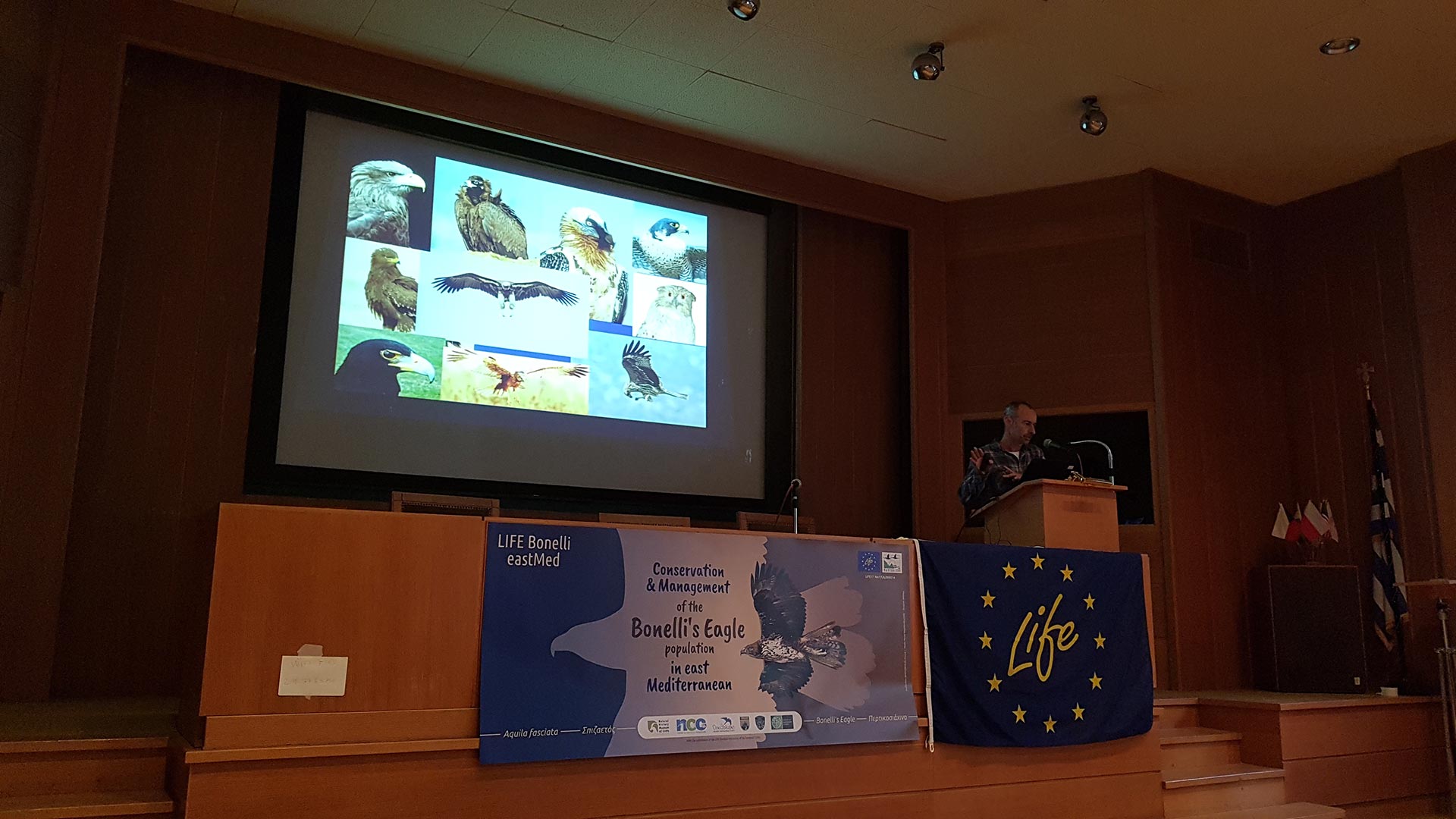
- Public awareness and dissemination of results
The action will focus to all target groups identified by the project. The main goal of the campaign will be to increase the popularity of the Bonelli’s eagle (BE), the awareness of the threats it faces, to communicate to the public the importance of the Natura 2000 Network for wildlife and its ecosystem services. Namely the actions will include:
a) Public awareness campaign and production of communication material and special publications.
b) Engagement of the educational community.
c) Networking with other LIFE projects.
d) Implementation of Replicability and Transferability Plan.
Learn more about the Bonelli’s eagle and our actions for its protection on the Project's website
lifebonelli.eu


The project is implemented in 22 Natura 2000 sites of Greece and Cyprus, by the Natural Museum of Crete - University of Crete, the Game and Fauna Service (Game Fund) - Cyprus, the Hellenic ORNITHOLOGICAL Society/BirdLife Greece, the Ministry of Environment & Energy - Greece, the Department of Forests - Cyprus and the NCC Environmental Studies Ltd with the financial contribution of the LIFE instrument of the EU and is co-financed by the Green Fund and the A.G. Leventis Foundation.

